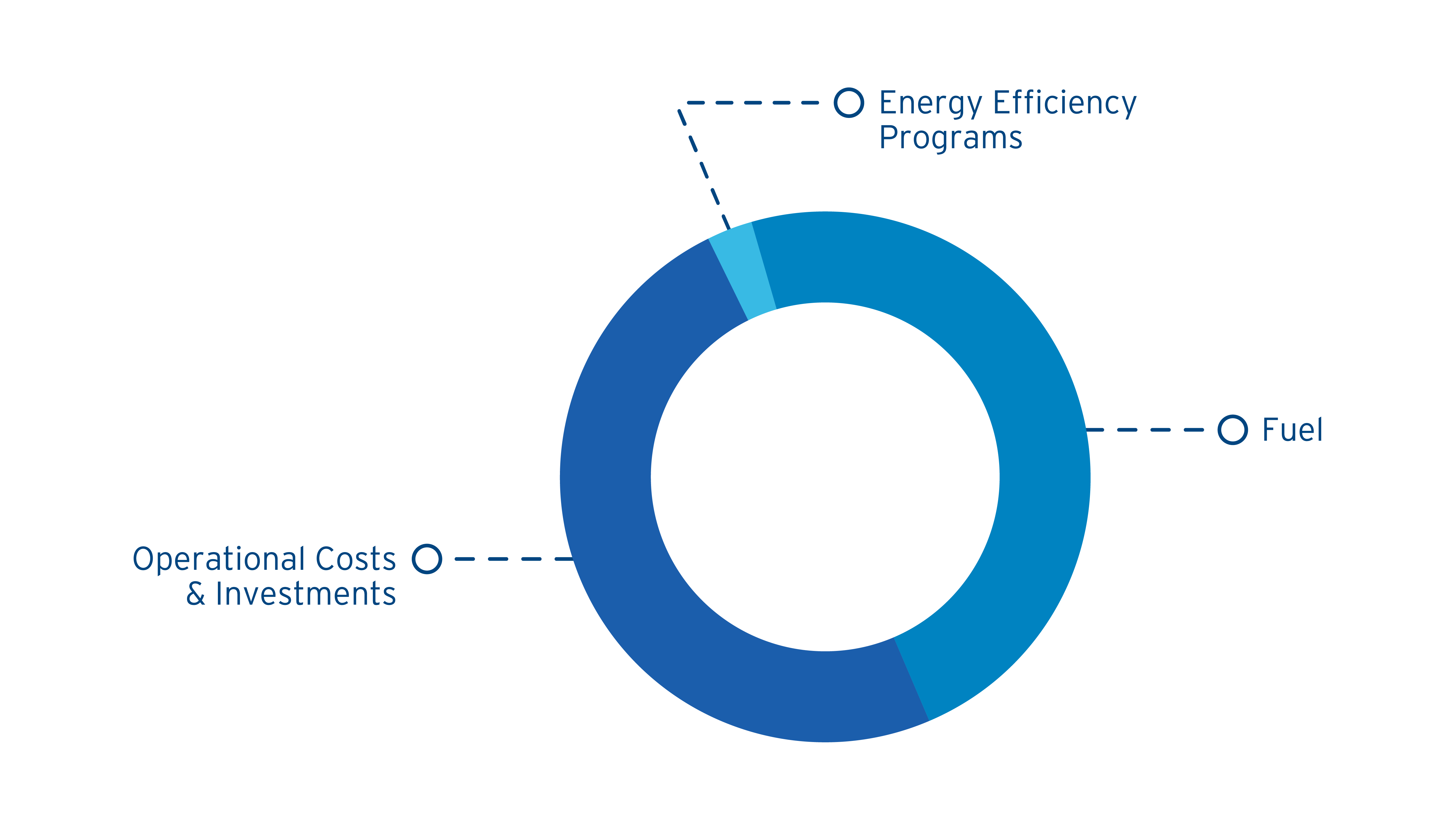
The visual above is for demonstrative purposes only based on the standard residential rate (domestic service tariff). The monthly base charge would be additional.
FUEL (Fuel Adjustment Mechanism - FAM)
The cost of fuel and purchased power we require to serve customers and meet their electricity needs. This includes many forms of fuel like oil, coal, and biomass, as well as purchased power, including from hydro and wind facilities, as well as imported electricity. Learn more about fuel-related costs.
OPERATIONAL COSTS & INVESTMENTS (Non-Fuel)
The cost to invest in and maintain assets, such as generation facilities (making of power) and transmission and distribution infrastructure (delivery of power). Examples include our power plants, fleet trucks, and poles and wires.
ENERGY EFFICIENCY PROGRAMS (Demand Side Management Cost Recovery Rider - DSM)
The cost of delivering energy efficiency programs that encourage cost savings for customers. Learn more about Energy Efficiency Programs.